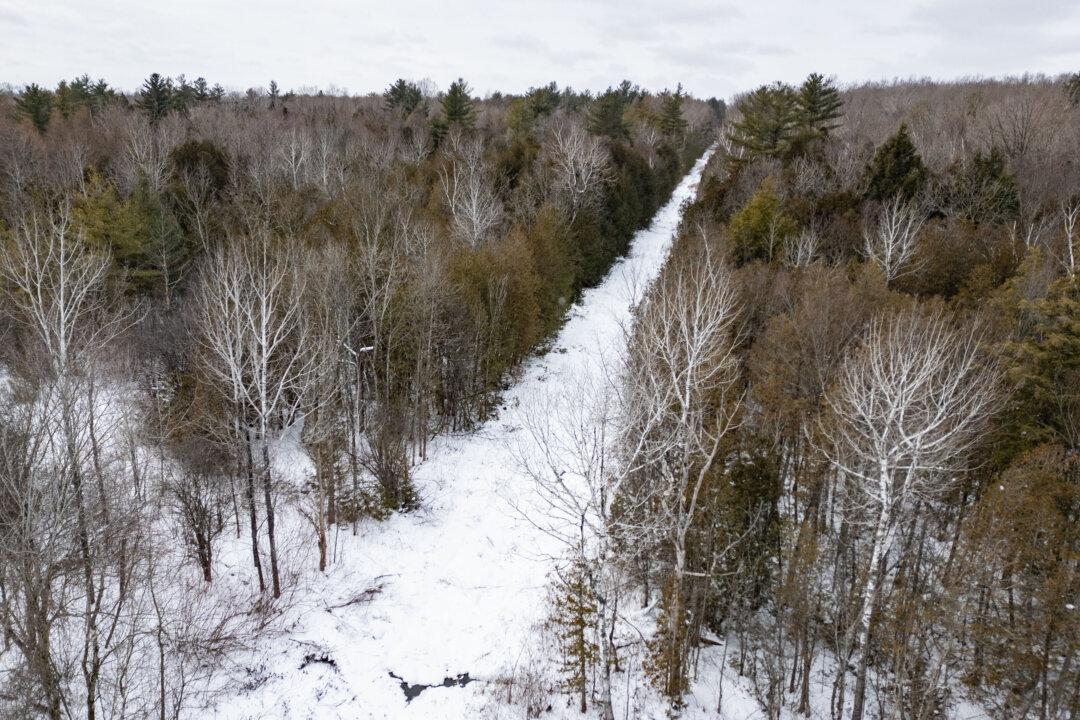Jaclyn and Brennen McConnell had planned their elopement in the Alberta Rockies a year ago, but they hadn’t prepared to spend their wedding night sleeping on the floor in a building on the top of a mountain.
The couple from Kelowna, B.C., got married Monday before taking the Banff Gondola up to the summit of Sulphur Mountain to have wedding pictures taken by photographer Pala Kovacs.
“We only planned to be up there for an hour. Pala took the most unreal photos,” Jaclyn McConnell said Wednesday in an interview.
“We were getting ready to go and the power went out. So, we took some more photos and then nothing was happening and we stayed there for 13 hours.”
The popular tourist attraction in Banff National Park had stopped working due to a power outage caused by a lightning storm.
Both McConnell and Kovacs said there didn’t seem to be much of a plan in place.
“We waited around and we were told over different intervals what they were doing, but it was super obvious that they didn’t have any kind of contingency plan,” Kovacs said. “However, the staff working up there was really great.”
A spokeswoman for Pursuit, which runs the gondola, said they do have stringent procedures in place for such incidents.
“But we will always look for ways to enhance our guest communications response,” Tanya Otis said in an email.
She said the gondola has an auxiliary generator that allowed the company to bring guests who were in the gondola cabins down safely when the outage occurred.
“In accordance with the Canadian Standards Association’s rules for passenger ropeways, backup emergency drive systems are used exclusively for deboarding guests in gondola cabins in the case of a stoppage,” she said. “It is not for unloading guests off the mountain.”
The company has said that several hundred guests had to be helped down from the summit after the gondola was shut down. Parks Canada said its visitor safety team was involved and all guests were brought down Tuesday.
Some of the guests hiked the 5 1/2-kilometre trail that switchbacks down the mountain at night, while others waited until Tuesday morning to go down.
McConnell said people were told they could walk down at about 2 a.m. but that it would be at their own risk.
“It had been storming, there was lightning all over the place, plus it’s dark,” she said. “It’s pitch black and you’ve got bears everywhere. A lot of us were not comfortable walking down.”
They also didn’t have proper footwear, she said, so they ended up spending the night in the building at the top.
“We slept on the floor,” said McConnell. “My husband slept in his suit on the floor. I slept in my wedding dress on the floor.
“It was almost like sleeping in an airport.”
Kovacs said there were about 100 guests, including children and seniors, who opted to get a helicopter ride down.
“I couldn’t hike down if I wanted to,” she said. “I had a suitcase full of photography gear and all my lighting and stuff, so we waited until the morning and we got helicoptered down.
“They were pretty efficient about it, we just had to wait until daylight.”
Kovacs said it wasn’t as stressful as she expected, but it was tough on the children and seniors who got stuck.
“Because it’s a gondola, it’s the easiest way … and an accessible way for people to experience (the) alpine,” she said. “So, I felt really bad for them because there weren’t comfy spaces. They were cold … and they were hungry.”
She said staff opened a restaurant at about 3 a.m. Tuesday and prepared some food once it was clear the remaining guests would be spending the night at the top.
Kovacs said there was a child who needed medication and the first aid kit wasn’t fully stocked, but one of McConnell’s friends is a pediatric doctor and was able to help that family.
“There were definitely some people who were more stressed and taking it out on the staff,” she said. “But for the most part, people were pretty understanding that it was out of their hands.”





